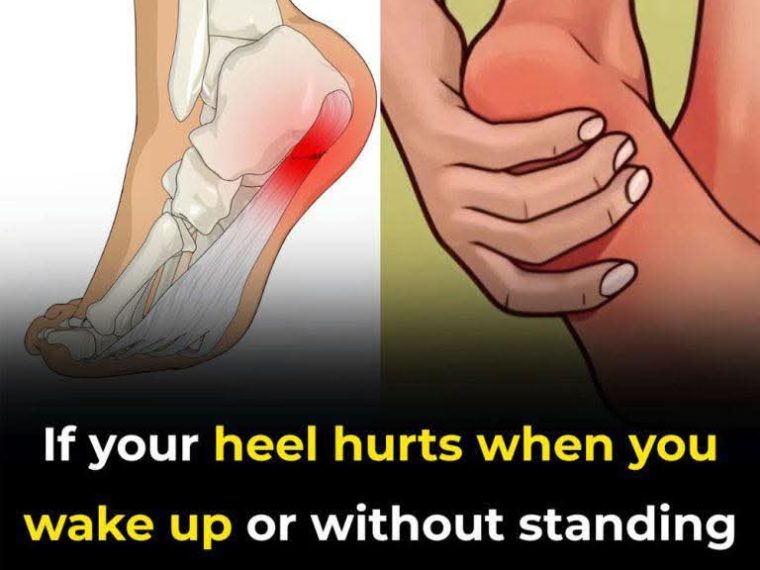While plantar fasciitis may feel discouraging, consistent exercise, proper footwear, and daily care can make a huge difference.
Waking up with intense heel pain that makes those first steps nearly impossible? You could be experiencing plantar fasciitis — a leading cause of heel pain. This condition develops when the thick band of tissue linking your heel to your toes becomes irritated or inflamed, often due to overuse, strain, or tight muscles.
The upside? Regular stretching and strengthening exercises can relieve discomfort and reduce the risk of it returning. Below are some of the most effective, research-supported exercises you can do at home to aid in long-term healing.
What Is Plantar Fasciitis and Why Does It Hurt So Much?
The plantar fascia is a strong ligament that supports the arch of your foot. When it becomes irritated or overstressed, it creates sharp, stabbing pain — particularly noticeable in the morning or after long periods of sitting. Runners, people who stand for hours at work, and those wearing unsupportive shoes are at higher risk.
Left untreated, plantar fasciitis can become chronic, affecting daily mobility and overall quality of life. That’s why early care through targeted exercises is essential.
7 Best Exercises to Relieve Heel Pain

Towel Stretch
This gentle stretch increases flexibility in both the calf and the plantar fascia.
How to do it:
Sit with legs stretched out in front.
Loop a towel or belt around the ball of your foot.
Pull the towel toward you until you feel a stretch in your arch and calf.
Hold 15–30 seconds, repeat 2–3 times.
Calf Stretch
Tight calves put extra pressure on the plantar fascia. Loosening them helps reduce strain.
How to do it:
Stand facing a wall with both hands pressing against it.
Step one foot back, heels flat on the ground.
Bend the front knee while keeping the back leg straight.
Press the back heel into the ground.
Hold 15–30 seconds per side, repeat 2–3 times.
Plantar Fascia Stretch
Directly targets the inflamed tissue and improves flexibility.
How to do it:
Sit in a chair and cross one foot over the other knee.
Pull the toes of the affected foot gently toward you.
Feel the stretch along the arch.
Hold 15–30 seconds, repeat 2–3 times per side.
Ball Roll (Massage Stretch)
This acts as a self-massage to break up tension and reduce inflammation.
How to do it:
Sit with feet flat.
Place a tennis ball, golf ball, or frozen water bottle under your arch.
Roll back and forth slowly for 1–2 minutes.
Repeat several times per day, especially after standing or exercise.
Toe Taps (Strength Builder)
Strengthens the tiny muscles in your feet that support your arch.
How to do it:
Sit with feet on the floor.
Lift toes upward toward your shin, keeping heels down.
Hold briefly, then relax.
Perform 10–15 reps, 2–3 sets.
Foot Flex and Point
Improves ankle flexibility and strengthens supporting muscles.
How to do it:
Sit with legs extended.
Flex your toes toward your shin for 5 seconds.
Point your toes forward for 5 seconds.
Repeat 10–15 times per foot.
Ankle Circles
Boosts ankle mobility, helping distribute pressure evenly.
How to do it:
Extend one leg in front.
Slowly rotate the ankle 10 times clockwise, then 10 times counterclockwise.
Repeat with the other foot.
When to Seek Professional Help
If your heel pain persists after a few weeks of daily stretching, it’s best to consult a healthcare provider or physical therapist. They may suggest:
Custom orthotic shoe inserts
Night splints to keep the fascia stretched overnight
Physical therapy sessions
Advanced treatments such as shockwave therapy or injections
Tips to Prevent Plantar Fasciitis
Wear shoes with good arch support and cushioning.
Avoid walking barefoot on hard surfaces for long periods.
Stretch your calves and feet before and after workouts.
Maintain a healthy weight to reduce stress on the feet.
Replace worn-out shoes regularly.





